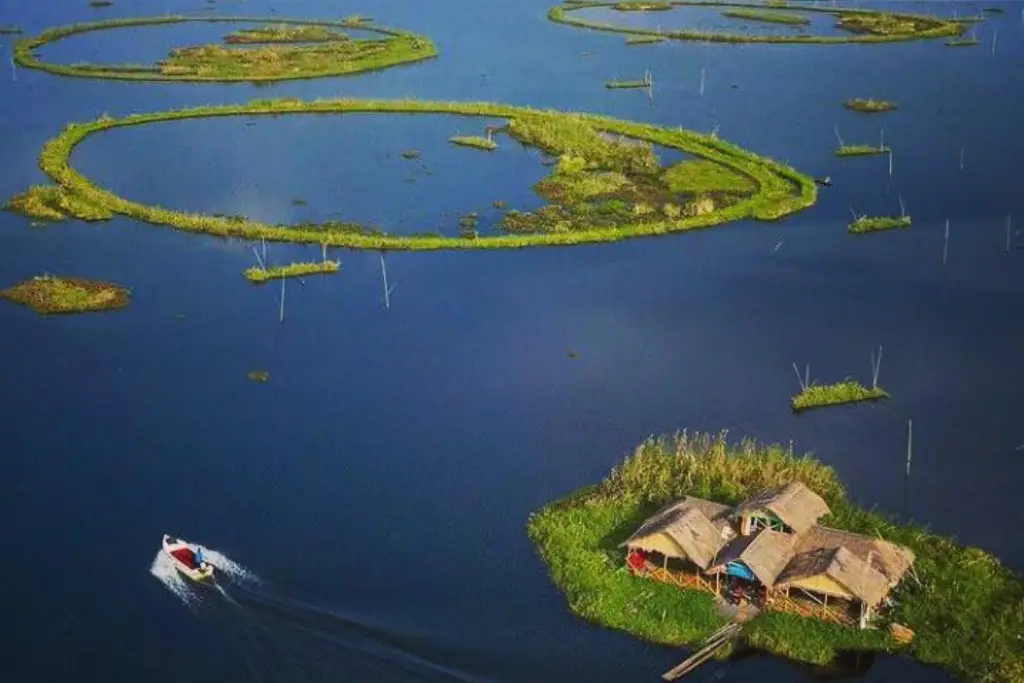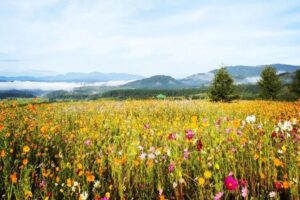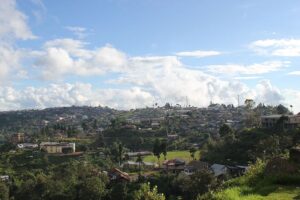Manipur, in the northeastern part of India, is a state often referred to as the “Jewel of the East.” Known for its picturesque landscapes and vibrant cultural heritage, Manipur offers a unique blend of natural wonders and traditional richness. Among its many treasures is the captivating Keibul Lamjao National Park. It is a singular wetland ecosystem and has the distinction of being the only floating park of its kind in the world
History of Keibul Lamjao National Park
Established in 1977, this enchanting Park has a history entwined with the cultural fabric of Manipur. Local folklore and traditions emphasize the significance of this natural sanctuary, portraying it as a haven for both wildlife and spiritual contemplation. This park is not just a haven for wildlife enthusiasts but a revered space in the hearts of the local community, resonating with tales from folklore and traditions.
Beyond its lush landscapes and thriving biodiversity, the establishment of Keibul Lamjao National Park carries a profound commitment to environmental conservation. The park stands as a testament to the collective responsibility of safeguarding the region’s rich ecological diversity. It is a pledge to ensure a sustainable future where the delicate balance between human activities and the environment is maintained.
Geography and Topography
Spread across an expanse of approximately 40 sq. km, Keibul Lamjao National Park is strategically nestled on the southern fringes of Loktak Lake, rightfully claiming its place as the largest freshwater lake in Northeast India. This serene oasis of natural beauty is a testament to the delicate balance between land and water, where the lush greenery meets the crystal-clear expanses of Loktak, creating a mesmerizing spectacle for all who venture here.

Situated in the heart of Manipur, the park’s allure lies in its unique and extraordinary topography. Unlike conventional national parks, Keibul Lamjao is distinguished by the presence of floating phumdis, which are essentially large masses of intertwined vegetation, soil, and organic matter. These phumdis drift with an almost ethereal grace on the surface of Loktak Lake, forming a captivating mosaic that is both enchanting and rare.
The floating phumdis play a crucial role in shaping the landscape of Keibul Lamjao. Their buoyancy creates an ever-changing environment, where pathways of water wind through the dense vegetation, offering an intimate and immersive experience for visitors. As you traverse the park, you’ll find yourself walking on these naturally occurring floating islands, each step revealing a new facet of the park’s ecological complexity.
This unique topography not only sets Keibul Lamjao apart from other national parks but also contributes to the park’s status as the only floating national park in the world. The symbiotic relationship between the phumdis and Loktak Lake creates an otherworldly ambiance, making Keibul Lamjao a destination that beckons nature enthusiasts, researchers, and adventure seekers alike.
Flora and Fauna
The breathtaking abundance of vegetation in this region is truly remarkable. The floating marshes, known as Phumdis, comprise a dense layer of vegetation approximately 120 centimeters thick. Researchers state that these plants have existed for at least half a century. This flourishing ecosystem boasts a diverse range of plant life, including wild rice, Coix Lecryma-Jobi, Carex, and Lilhar Polygonum Perfoliatum. These distinctive flora and vegetation are exclusive to the state of Manipur and can be exclusively found within the confines of Keibul Lamjao National Park.
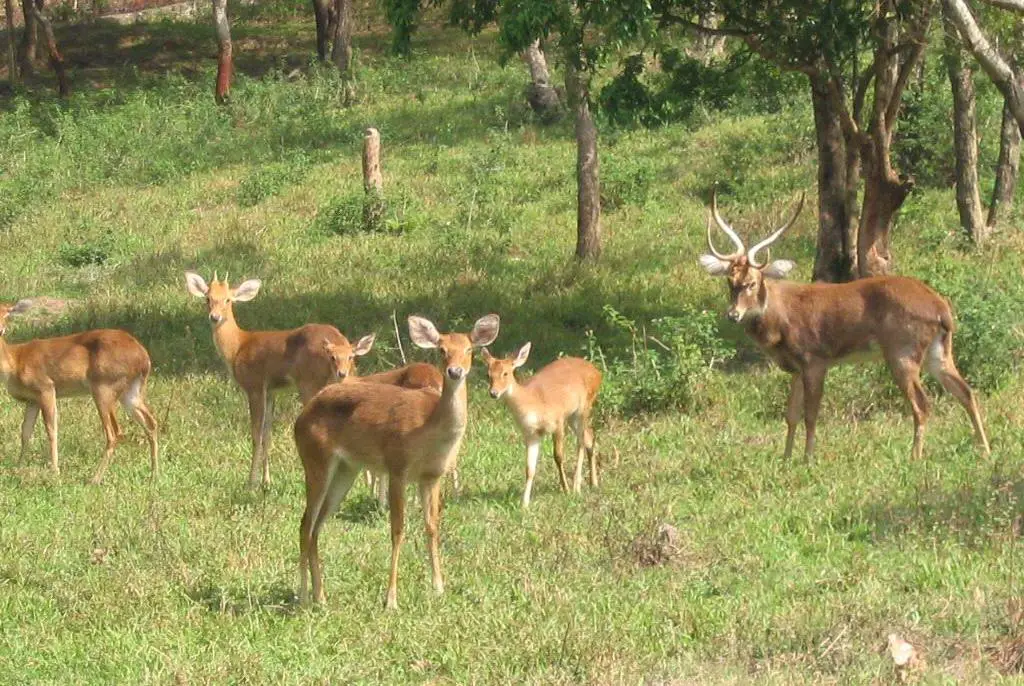
Home to brow-antlered deer, also known as sangai and recognized as the state animal of Manipur, this national park stands as a prominent attraction for tourists. The rare and graceful sangai, often referred to as the dancing deer, can be found in its natural habitat. The park is home to other wildlife species, including hog deer, wild boar, large Indian civet, jungle cat, and otter. The park is a haven for birdwatchers, hosting numerous migratory birds that arrive between November and March, as well as a variety of waterfowl.
Ecotourism and Visitor Experience
For those eager to explore this ecological wonder, reaching Keibul Lamjao is an adventure in itself. Accessible from Imphal, the state capital of Manipur, the journey to the park offers glimpses of Manipur’s diverse landscapes. Visitors are advised to obtain the necessary permits and ensure a smooth and responsible exploration of the park.
Keibul Lamjao offers a myriad of activities for tourists seeking an immersive experience. Boat rides on Loktak Lake provide a surreal view of the floating phumdis, while nature trails unveil the park’s diverse flora and fauna. Bird-watching enthusiasts can spot both resident and migratory avian species, adding to the park’s allure.
Beyond its natural splendor, Keibul Lamjao provides an opportunity to delve into Manipur’s rich cultural tapestry. Local festivals, such as The Sangai Festival, may coincide with your visit, offering a unique chance to witness traditional celebrations and immerse yourself in the cultural heritage of the region.

The Manipur Sangai Festival, dedicated to the state’s unique brow-antlered deer, Sangai, held annually in November, started modestly in 2010 and has since grown into one of India’s renowned festivals. From November 21st to 30th, 2023, it showcases Manipur’s rich culture, attracting tourists globally. Organized by the state government and tourism department, the festival highlights the state’s potential in music, arts, handicrafts, indigenous sports, and cuisine. The theme, “Festival of Oneness,” emphasizes unity, celebrating Manipuri heritage across 13 districts in 2022.
Recognition and UNESCO Status
In recognition of its outstanding ecological value, Keibul Lamjao National Park has been included in the UNESCO World Heritage tentative list. This acknowledgment serves as a testament to the park’s global importance and its role in preserving biodiversity.
The distinctive features of Keibul Lamjao contribute not only to the local ecosystem but also to global biodiversity conservation efforts. The park serves as a living laboratory for researchers and environmentalists, offering insights into unique ecosystems and the importance of their preservation.
Local Perspectives
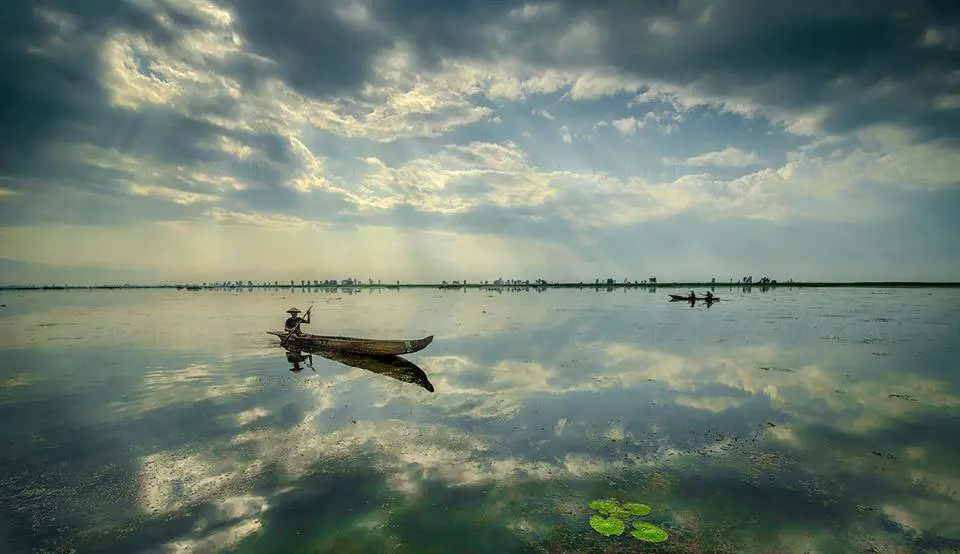
Local communities play a pivotal role in the ongoing conservation and management of Keibul Lamjao. The park is not merely a natural asset but an integral part of the cultural and economic landscape for nearby residents. Community-based initiatives focus on sustainable practices, ensuring that the local populace is actively engaged in the long-term well-being of the park.
The existence of Keibul Lamjao has influenced the lives of those living in its proximity. While the park offers opportunities for eco-tourism, it has also posed challenges to local livelihoods. Striking a balance between conservation and sustainable development is crucial to ensuring that both the environment and the communities around the park thrive harmoniously.
Best Time To Visit
The best time for visiting Keibul Lamjao National Park is from October to March when lake water levels are favorable for exploration.

The recommended times for a visit are from 6:00 AM to 10:00 AM and 3:30 PM to 6:00 PM, as during these hours the Sangai deer comes out for feeding, offering the best chances to observe them in herds.
Where to Stay
Keibul Lamjao National Park provides numerous accommodation options. For an immersive wildlife experience, consider staying in the Forest Department’s rest houses within the park. These accommodations offer an ideal base for exploring Manipur’s rich biodiversity. Alternatively, if you prefer a private stay, several well-equipped accommodations near the park provide affordable options for a comfortable experience.
How to Reach
To reach Keibul Lamjao National Park from Imphal, covering a distance of 54 kilometers, one can travel by road using private or public transportation via NH2. For those arriving by train, the Dimapur Railway Station, situated approximately 220 kilometers from Imphal, serves as the nearest railway point.
Public transport or hired cabs are readily available for the journey to the enchanting national park. If arriving by air, the Imphal International Airport, located about 32 kilometers away, provides the closest aerial access. Travelers can easily reach Keibul Lamjao National Park by hiring cabs or utilizing public transportation from the airport.
It is to be noted that an Inner Line Permit (ILP) is required for non-locals to enter and stay in the Indian state of Manipur. The permit can be obtained through the official website of the Manipur Inner Line Permit System, which is designed to regulate and monitor the entry of non-locals into the state. The permit can also be obtained from designated offices in the state, and it is usually issued for a period of 15 days, although it can be extended. The ILP is intended to protect the rights and interests of the local population and to maintain peace and security in the state.
(To know more about Manipur State Tourism check the link here.)

